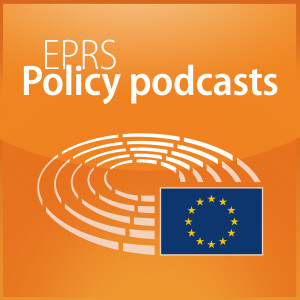
European Parliament - EPRS Policy podcasts
Business:Non-Profit

By promoting a high level of employment, the European Union (EU) has been fighting against unemployment since as long ago as the early 1950s. The fight against unemployment was brought to the top of the European agenda with the onset of the 2008 economic and financial crisis, and the consequent rise in unemployment rates in all European Union (EU) Member States. In its Europe 2020 strategy, the European Commission set a target to get 75 % of 20 to 64 year-olds into employment by 2020. EU labour market conditions have significantly improved in recent years, and most labour market indicators have strengthened steadily. Since mid-2013, the unemployment rate has continued to decline, and the EU is back to its pre-crisis level (6.8 % in July 2018). Despite the recovery in economic growth and its positive impact on the labour market, the EU has still to face unemployment challenges, particularly concerning differences between Member States, youth unemployment and long-term unemployment. Since 2014, efforts have been made in a number of areas, including to help young people enter the labour market, to combat long-term unemployment, upgrade skills, and facilitate workers' mobility in the European Union. The improvement in labour market indicators has been reflected in citizens' improved evaluation of the EU's involvement in the fight against unemployment, but there is still a very high demand for even more EU intervention in this policy area (76 % of EU citizens). In the future, new or updated legislation relating to employment could modernise work to help in adjustment to a digital world, support sustainable transitions from unemployment into employment and between jobs, increase labour mobility and create closer coordination between economic and social policies.
http://www.europarl.europa.eu/RegData/etudes/BRIE/2018/630274/EPRS_BRI(2018)630274_EN.pdf
Source: © European Union - EP
view more
http://www.europarl.europa.eu/RegData/etudes/BRIE/2018/630274/EPRS_BRI(2018)630274_EN.pdf
Source: © European Union - EP
More Episodes
Children's rights and the UN SDGs
 2019-11-20
2019-11-20
 2019-11-20
2019-11-20
EU support for fighting global poverty
 2019-11-20
2019-11-20
 2019-11-20
2019-11-20
Human rights in EU trade agreements
 2019-07-12
2019-07-12
 2019-07-12
2019-07-12
Economic impacts of artificial intelligence
 2019-07-02
2019-07-02
 2019-07-02
2019-07-02
Electing the European Parliament's President
 2019-06-28
2019-06-28
 2019-06-28
2019-06-28
Rules on political groups in the EP
 2019-06-16
2019-06-16
 2019-06-16
2019-06-16
Regional policy
 2019-06-16
2019-06-16
 2019-06-16
2019-06-16
The fight against terrorism
 2019-04-05
2019-04-05
 2019-04-05
2019-04-05
Foreign policy
 2019-04-05
2019-04-05
 2019-04-05
2019-04-05
012345678910111213141516171819
Create your
podcast in
minutes
- Full-featured podcast site
- Unlimited storage and bandwidth
- Comprehensive podcast stats
- Distribute to Apple Podcasts, Spotify, and more
- Make money with your podcast
It is Free
- Privacy Policy
- Cookie Policy
- Terms of Use
- Consent Preferences
- Copyright © 2015-2024 Podbean.com





